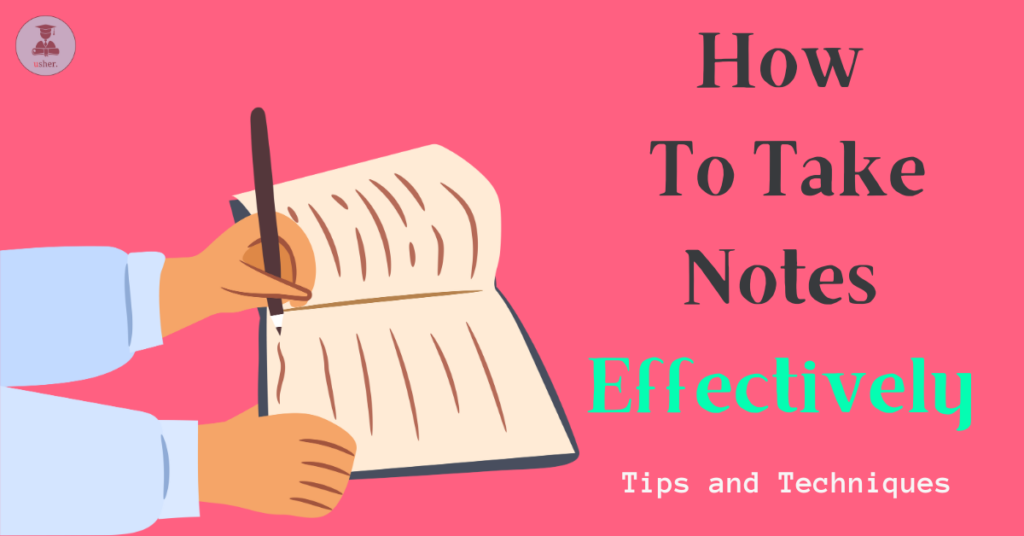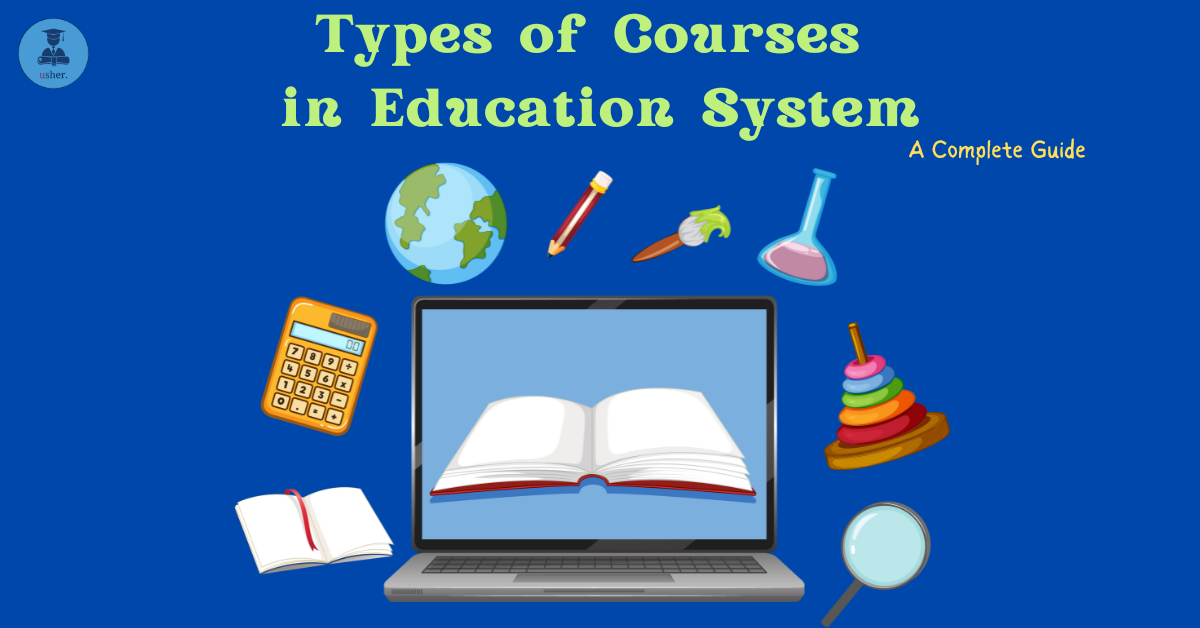What is the most effective note-taking method?
Depending on personal preferences, learning styles, and the environment in which the notes will be used, there are several approaches that work well for taking notes. For certain people and circumstances, alternative approaches are more effective.
Cornell Method
We have to draw lines on the page using this technique. One vertical line, two horizontal lines. The title, date, and brief descriptions must be listed in the top horizontal line. Then, on either side of the vertical line, are the trigger questions and the primary notes/key ideas. The notes’ synopsis must appear in the horizontal line below.
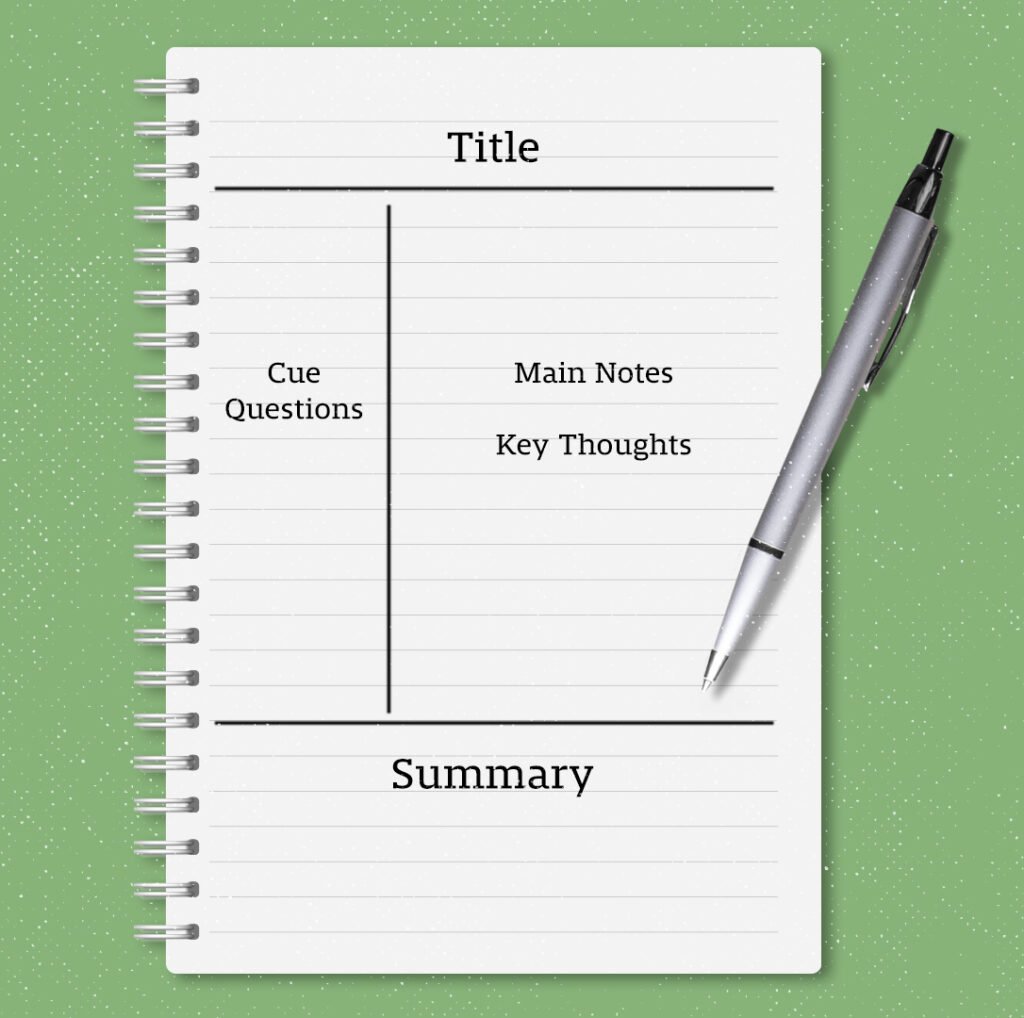
Mind Mapping
You can construct a graphical note that illustrates concepts and their connections. Then start by introducing a main theme, using lines or arrows to branch out into relevant subtopics. Make sure to brainstorm and arrange complicated data effectively.
Outlining
You can put the information in a hierarchical format with numbers or bullet points. To indicate their relationships, the main themes and subtopics are indented. Remember that the hierarchy and organization of the information should be simple to understand.
Flow-Based Notes
It uses diagrams, arrows, and symbols to show the flow of processes and ideas. It is an effective way of understanding relationships between events’ sequences and concepts.
The Feynman Technique
Explain the idea as though you were giving a lesson to another person. Also determine any areas that you still don’t understand, and go over the content again if needed.
Sentence Method
You must focus on capturing important concepts in your notes by utilizing whole phrases. This technique is very useful for preserving story structure and adding information.
Digital Note-Taking
You can effectively organize and search through your notes and use programs or apps like Evernote, OneNote, or Notion. It is now easy to add multimedia components like pictures and links.
What is effective note-making?
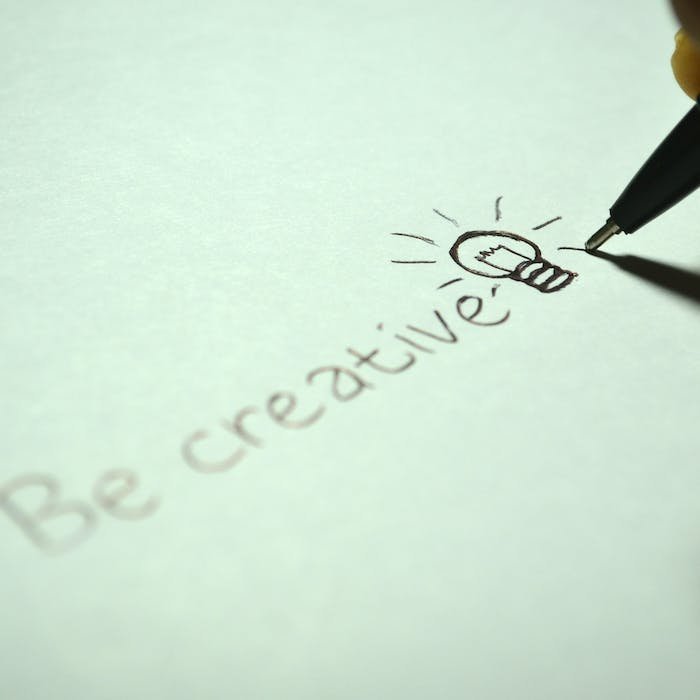
Making notes effectively requires gathering and arranging data in a way that makes it easier to comprehend, remember, and access it later. Here are some pointers for taking useful notes:
Active Engagement
While taking notes, actively engage with the content. To improve understanding, rephrase the material.
Prioritize Key Information
Determine and rank the essential concepts, central ideas, and illustrative details. Rather than attempting to transcribe everything, concentrate on gathering the most important information.
Use Keywords and Abbreviations
Create a system of acronyms and keywords to help you take notes more quickly. This makes it possible to record more data in less time.
Organize Information
To keep your notes organized, use a structured format like bullet points, headings, or numbers. This makes it easy to review and comprehend the connections between various bits of information.
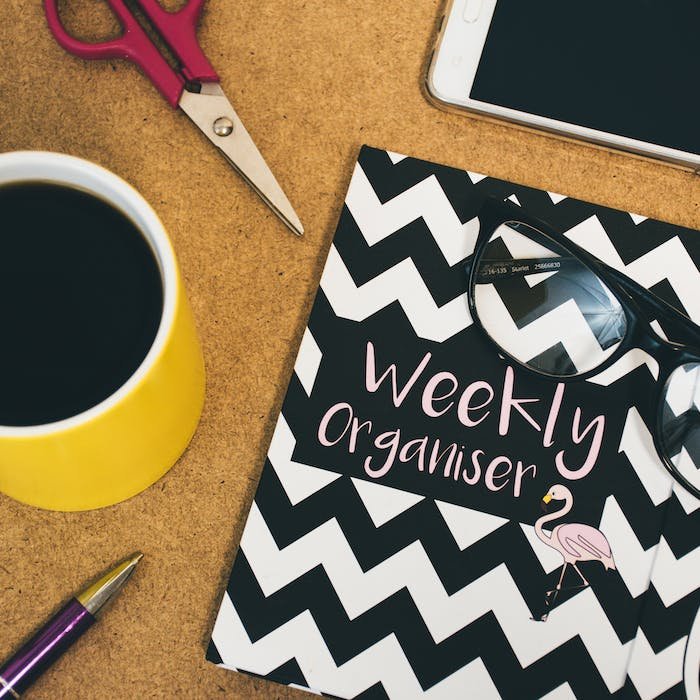
Visual Aids
Use visual components such as diagrams, charts, and graphs as applicable. With the help of visual aids, difficult concepts can be better understood and easier to process.
Highlighting and Emphasis
To highlight important information, use bold, underlining, or highlighting in your text. Take care not to overdo it, as this can lessen the impact of the highlighting.
Review and Revise
Reread and edit your notes regularly. This keeps your notes accurate and current while also serving to reinforce the material.
Summarize
Summarize essential points from your notes regularly. This can occur around the end of a section or lecture. Summarizing reinforces learning and allows for easy reference.
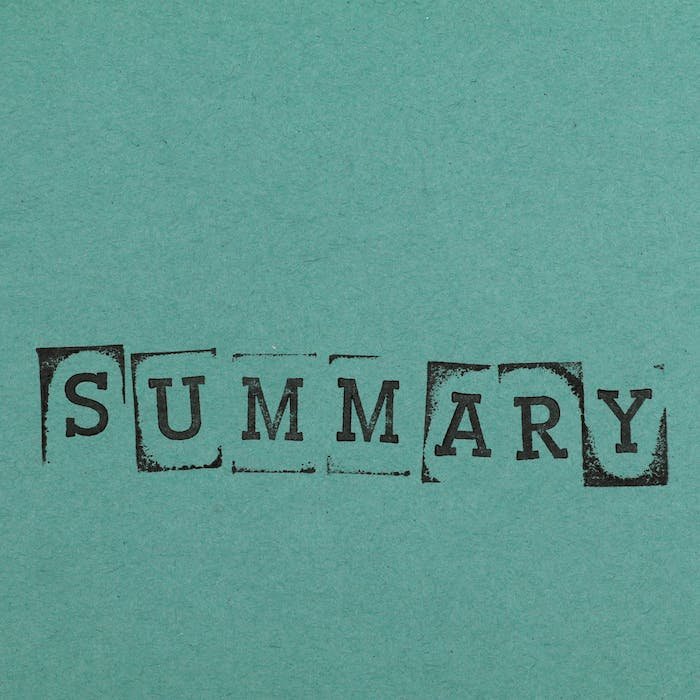
Personalization
Incorporate your ideas, queries, or connections to personal experiences in your notes to make them more unique. This makes the material more relatable and memorable.
Stay Organized
Keep your notes well-organized, whether in physical notebooks or digital tools. This organization makes it easier to locate specific information when needed.
Contextualize
Make connections between new and prior knowledge. Forming a more thorough comprehension of the subject matter is aided by comprehending the context.
Be Selective
Choose carefully what information to put in your notes. Steer clear of unnecessary information that could clog your notes and make them more difficult to go over.
Experiment with Different Methods
Experiment with different note-taking techniques (such as mind mapping and the Cornell Method) to find what suits you best in certain scenarios.
What is the 3-step method to effective note-taking?
The 3-step method to effective note-taking is a simplified approach that focuses on capturing key information efficiently. While variations may exist, a common framework involves the following three steps:
Capture
During this step, your primary goal is to capture relevant information quickly. This may involve jotting down key points, important concepts, or significant details from a lecture, reading, or discussion.
Use abbreviations, symbols, or keywords to speed up the note-taking process.
Don’t try to write down everything; focus on the most critical information.
Organize
After capturing information, organize your notes in a structured manner. This step involves arranging the information in a logical sequence, grouping related ideas together, and using a clear format.
Use headings, bullet points, numbering, or any other method that helps you visualize the structure of the content.
Organizing notes makes it easier to review and understand the relationships between different pieces of information.
Review
You can review all the notes to make sure that your understanding of the material is correct. This step helps with retention and identifies any gaps in your knowledge.
Consider summarizing key points, creating flashcards, or asking yourself questions based on your notes during the review process.
If possible, revisit and revise your notes periodically to ensure they remain accurate and relevant.
This three-step method emphasizes efficiency, clarity, and active engagement with the material.
It’s adaptable and can be applied to various note-taking situations, including lectures, readings, meetings, or research.
Remember that note-taking is a personal process, and you may need to adjust the method based on your learning preferences and the nature of the information you’re dealing with.
How do I make my notes more effective?
By implementing techniques that improve understanding, recall, and review ease, you may make your notes more productive. To help your notes be more useful and effective, consider the following advice:
- Active engagement
- Prioritize key information
- Use visuals
- Clear formatting
- Use abbreviations and symbols
- Review and revise regularly
- Personalize notes by adding topic-related and real-world-related questions.
- Highlight key points
- Connect similar concepts
- Use technology wisely
- Keep your notebooks and digital notes organized.
- Be selective and don’t use unnecessary points.
- Practice recalling information from your notes without looking at them.
- Experiment with different methods of note-taking like Cornell and the Mind mapping method.
What is the charting method of notes?

Using a structured chart or table to organize information is known as the charting method of note-taking. This approach is constructive for grouping data, contrasting various components, and clearly and visually displaying information. An overview of the charting method’s basic operation is provided below:
- Create tables
- Define categories or column headings.
- Fill in information like specific topics or subtopics.
- Use symbols or colors to highlight information.
- Compare different elements’ relationships by identifying patterns.
- Add brief notes with charts.
- Keep the notes short.
What is a two-column method?
During lectures, readings, or discussions, the two-column method—also referred to as the two-column note-taking system—is an easy and efficient approach to arranging information. Using this strategy, you will divide your note paper or digital note-taking space into two columns: one for your main points or important terms, and another for details or explanations that support them.
What are the two categories of note-taking?
We can categorize note-taking into two ways – Linear and Non-linear.
Linear Note-Taking
When taking notes linearly, data is arranged and sequentially recorded, usually with the use of numbers, bullet points, or complete paragraphs.
Characteristics of Linear Note-Taking
Notes are taken chronologically, following the progression of the lecture, presentation, or reading material. This makes it ideal for topics that have a distinct outline or logical flow of concepts. The outline method, Cornell method, and two-column method are examples of common techniques.
Advantages of Linear Note-Taking
- Facilitates a logical and organized representation of information.
- Easy to follow the sequence of ideas and concepts.
- Effective for capturing a speaker’s main points and supporting details.
Nonlinear Note-Taking
The process of taking nonlinear notes entails organizing information using mind maps, concept maps, diagrams, or charts to create a more integrated visual representation.
Characteristics of Nonlinear Note-Taking
- Visual links between concepts are used to visually organize the information.
- Ideal for topics involving intricate connections or interrelated concepts.
- Well-suited for subjects with complex relationships or interconnected ideas.
Advantages of Nonlinear Note-Taking
- Encourages a more holistic understanding of the material.
- Visually represents relationships between different concepts.
- Supports brainstorming and creative thinking.
Both linear and nonlinear note-taking strategies have benefits of their own and work well in various subjects, learning environments, and learning styles.
The decision between the two is frequently influenced by a person’s capacity to integrate and comprehend information in various ways, the type of content being covered, and personal preferences.
Some people might even combine the two approaches, using nonlinear techniques for brainstorming or visual aids and linear notes for stuff that is already structured.
What is the boxing method of note-taking?

The boxing method, sometimes referred to as the boxing technique or the box method, is a note-taking technique wherein boxes or rectangles are drawn around important ideas or topics. Information can be arranged and highlighted graphically using this technique.
How do you take flow notes?
Flow mapping, sometimes referred to as flow-based notes or flow notes, is the process of putting information into a visual format that illustrates the ideas’ flow or order. This approach is particularly helpful for comprehending dates, procedures, and the connections between various components.
How to do outline notes?
Creating outline notes involves structuring information hierarchically, using a system of headings and subheadings to represent the main ideas and supporting details. This method is organized and easy to follow. Here’s a step-by-step guide on how to take outline notes:
Identify the main points or key concepts that you want to capture. These will serve as the top-level headings in your outline.
Use Headings and Subheadings
Organize your notes using a system of headings and subheadings. Each main point becomes a heading, and related details or subpoints are indented underneath as subheadings.
Maintain a Logical Order
You must make an arrangement of your main points and subpoints in a correct and logical order. This could be chronological, sequential, or based on the order of importance.
Consistent Formatting
Use consistent formatting for your headings and subheadings. For example, you might use bold text for main headings and italics for subheadings. Consistency helps to visually organize your outline.
Capture Key Information
Under each heading or subheading, write down key information, facts, or explanations. You must keep the information short and only to the point. Do not use unnecessary pointers.
Use Bullet Points or Numbers
Use bullet points or numbers to further organize information within each level of your outline. Bulleted lists are useful for presenting related details, while numbering can indicate a sequence or hierarchy.
Parallel Structure
Maintain a parallel structure, especially when using subheadings at the same level. This means that the wording and structure of each point should be consistent for clarity.
Indentation
Use indentation to show the relationships between different levels of information. Typically, subheadings are indented to the right beneath their corresponding headings.
Abbreviations and Symbols
To speed up the process of note-taking, you can use symbols and different abbreviations. However, you must make sure that your abbreviations are clear to every one.
Review and Revise
Periodically review your outline notes to ensure that the structure is clear and that you’ve captured all the necessary information. Revise and expand your outline as needed.
What is the mind mapping method of note-taking?
Mind mapping is a visual note-taking and organizational technique that involves creating a diagram to represent ideas, concepts, and their relationships. It is a method that helps individuals to better understand, remember, and recall information. The central idea or topic is placed in the center of the map, and related ideas branch out from it in a hierarchical and interconnected manner.

Here’s how you can create a mind map for note-taking:
Start with a Central Idea
Begin with a central concept or main topic in the center of your page. This could be a keyword or the main theme of your notes.
Branch Out
Create branches extending from the central idea to represent key subtopics or main points related to the central idea. These branches can radiate outwards in various directions.
Add Keywords and Images
Use keywords or short phrases on each branch to capture essential information. You can also incorporate images, symbols, or icons to enhance understanding and memory.
Create Sub-Branches
For each subtopic, create additional branches to represent supporting details, examples, or related concepts. This hierarchical structure helps organize information logically.
Use Colors and Visuals
Employ different colors for branches and keywords to make the mind map visually appealing. This can also help in associating colors with specific themes or topics.
Connect Ideas
Draw lines or connectors between related ideas to indicate connections and relationships. The information flow could be understood properly by the visual representation.
Emphasize Key Points
Highlight or use bold fonts for key points or essential information to make them stand out.
Keep It Simple
You must not clutter the mind map with too much information that is difficult to understand. Keep it concise and focus on capturing the main ideas and their connections.
Mind mapping is a flexible technique that can be used in various contexts, such as brainstorming, organizing thoughts, planning projects, and, of course, note-taking.
It leverages both the visual and spatial aspects of learning, making it an effective tool for many people to better grasp and retain information.
There are also various digital tools available for creating mind maps, which can be particularly useful for those who prefer working on a computer or tablet.
How do you take non linear notes?
Taking non-linear notes involves organizing information in a way that does not follow a strict, linear structure like traditional outlines. This method is particularly useful for capturing ideas that may not fit neatly into a hierarchical format. Here are some techniques for taking non-linear notes that you can use:
Mind Maps
You can start with a central idea or topic in the center of the page.
Branch out with key subtopics, connecting them to the central idea.
Now you can add further branches for details, examples, or related concepts.
Use colors, images, and symbols to enhance visual representation.
Concept Mapping

Similar to mind maps, concept maps visually represent relationships between concepts.
You can use nodes for concepts and connect them with labeled lines to illustrate relationships.
Now include cross-links between related concepts to show connections.
Cornell Method
Divide your note paper into three sections: a narrow left column, a wider right column, and a small area at the bottom.
In the right column, jot down the main ideas and details.
Use the left column for keywords and key concepts.
You can use the bottom section to summarize the main points.
Bullet Journaling
Use a system of bullets, symbols, and short phrases to capture thoughts quickly.
Create an index to keep track of key topics.
Employ rapid logging for events, tasks, and notes.
Flowcharts
You must use flowcharts to represent processes or sequences of events.
Connect boxes with arrows to indicate the flow of information.
Include decision points and outcomes.
Outlining
While traditional outlines are linear, you can create non-linear outlines by using indentation and varying formats.
Use headers, subheaders, and bullet points to create a hierarchical structure.
Two-Column Method
Divide your paper or digital document into two columns.
Use one column for main ideas and the other for related details or examples.
Digital Tools
Use digital note-taking apps like OneNote, Evernote, or mind-mapping tools for flexibility.
These tools often allow you to move, connect, and rearrange information easily.
Random Note-Taking
Instead of organizing notes as you go, list down thoughts, ideas, and keywords in a random manner.
Later, you can review and organize these notes into a more coherent structure.
Choose a method or combination of methods that best suits your preferences and the type of information you’re working with. The goal is to create a visual representation that helps you grasp the relationships between ideas and facilitates better understanding and retention.
What is the write on slides method?
The write-on-slides technique involves drafting notes straight on the content given by your instructor. The Write-on-Slides Method simplifies taking notes and provides an engaging approach to interact with instructional material, whether done electronically or by printing the slides.
What is the fastest way to take notes?
Depending on your tastes, the type of information being taken, and the situation you’re taking notes, you can choose the fastest way to take notes. You may find the following brief note-taking strategies useful:
Abbreviations and Symbols
Create a system of symbols and abbreviations to help you write more quickly. Use “@” for “at,” “&” for “and,” or arrows to indicate “leads to” or “causes.”
Keywords Only
Pay more attention to writing down keywords than entire phrases. This makes it easier to summarize the content without becoming bogged down in the intricacies.
Bullet Points
Make a summary of the most important points using bullet points. It is quick to write in and simple to scan in this format.
Mind Mapping
Make a mind map quickly, adding connections and keywords. Using this graphic approach, you can quickly capture concepts.
Digital Voice Recorder
When appropriate, capture key points with a digital voice recorder. You can summarize or transcribe the data later.
Digital Note-Taking Apps
Make use of digital note-taking applications that provide speedy typing, simple formatting, and organization tools. Effective apps include Microsoft OneNote and Evernote.
Dictation Software
Take into consideration dictating your notes utilizing voice recognition software. If you feel comfortable expressing your ideas, this can go very quickly.
Capture the Main Ideas
Prioritize collecting the essential points and significant takeaways. Don’t let the intricacies drag you down when you’re first taking notes.
Use Shorthand
Use your knowledge of shorthand writing systems to shorten words and sentences. This will speed up the process of taking notes considerably.
Stay Focused
Remain focused on the essential ideas and omit any extraneous details. Reduce the information to its essential components.
Practice Active Listening
Engage in active listening when taking notes during a meeting or lecture. Rather than copying every word, concentrate on comprehending the main points.
Pre-prepared Templates
Make templates for information categories that are repeated. Have a template available with sections for the agenda, action items, and important points, for instance, if you frequently take meeting notes.
Try out different combinations of these strategies to see what suits you the best, taking into account your tastes and the particular setting in which you take notes. Achieving a balance between speed and precise capture of crucial information is crucial.
Which is the most common form of note-taking method?
One of the most popular note-taking techniques is the outline method since it makes things easier for the reader to understand. The students utilize arrows or bullet points to denote new ideas while practicing taking outline notes.
How do you take notes smartly?
Taking notes smartly involves adopting effective strategies that enhance comprehension, retention, and future usability. Here are some smart note-taking techniques:
Active Listening
Engage actively with the material during lectures, meetings, or while reading. Understand the main ideas and focus on key concepts.
Prioritize Information
Identify and prioritize the most important information. Don’t try to capture every detail; focus on the key points.
Use Keywords and Abbreviations
Develop a system of keywords and abbreviations to quickly capture information. This helps streamline your note-taking process.
Organize with Headings and Subheadings
Use clear headings and subheadings to organize your notes hierarchically. This helps create a logical structure for better understanding.
Utilize Technology
Explore digital note-taking apps, voice recognition software, or other technological tools to enhance efficiency. Apps like Evernote, OneNote, or Notion offer features for organization and collaboration.
Images
Draw an image if you have limited time because images are easier to remember than words. If you enjoy color coding, save that for after you take your initial notes. Compose brief, precise sentences. Utilize symbols and abbreviations to save time.
How do you take lazy notes?

Taking “lazy” notes typically implies a more relaxed or minimalistic approach to note-taking, where the emphasis is on capturing key information with minimal effort. Do not confuse it with Lazy.so notes application. Here, we are referring to the easiest ways that you can take notes in the class. There are moments when you may not feel like writing big note paragraphs, or you just don’t have enough time.
Thus, in such situations, you can use certain strategies for taking lazy notes:
Use Bullet Points
You can opt for simple bullet points to list key ideas. This format is quick and requires minimal effort.
Abbreviate
Use more abbreviations and shorthand to speed up your note-taking process. Create a set of abbreviations that make sense to you.
Keyword Only
You can capture only the essential keywords or phrases. This minimalist approach allows you to focus on the core concepts without writing full sentences.
Digital Tools
Use digital note-taking apps that offer features like voice-to-text, auto-correction, and easy formatting. These tools can make note-taking more efficient.
Visual Aids
Incorporate visual aids such as simple diagrams, charts, or symbols. Visual elements can convey information quickly with minimal text.
Highlighting
Instead of writing detailed notes, use highlighting or underlining to mark key points in texts or documents. This can help you focus on critical information.
Selective Detailing
Be selective about the details you include. Only jot down information that is crucial to your understanding or that you might forget.
Digital Voice Recorder
If appropriate, use a voice recorder to capture spoken information without actively taking notes. You can revisit and transcribe or summarize the content later.
Capture URLs or References
When learning from online sources, capture key URLs or references. This way, you can revisit the source for more information if needed.
Use Sticky Notes
Use sticky notes for quick annotations or jotting down short reminders. Stick them in relevant places for easy reference.
One-Sentence Summaries
Summarize each major point or idea in one sentence. This forces you to distill information to its core.
Group Similar Information
Organize your notes by grouping similar information together. This can create a sense of organization without detailed structuring.
Digital Scanning
If you have access to digital materials, consider using OCR (Optical Character Recognition) tools to scan and capture text quickly.
Collaborative Notes
If you have peers or colleagues, consider collaborative note-taking. Share responsibilities to lighten the individual load.
Remember, the goal of lazy note-taking is to strike a balance between capturing important information and minimizing the effort required. Experiment with different approaches to find what works best for you in different contexts.
What are the 4 ways to take notes?
Note-taking can be approached in various ways, and individuals often use a combination of methods based on the context and their preferences. Here are four common ways to take notes:
Linear Notes
Linear note-taking is the most traditional and straightforward method. It involves organizing information in a sequential or chronological order.
The outline format is a typical example of linear note-taking, where main topics are followed by subtopics and details in a structured manner.
Non-Linear Notes
Non-linear note-taking methods focus on capturing information in a less structured, more visual way.
Mind maps, concept maps, and diagrams are examples of non-linear note-taking. This approach emphasizes relationships between concepts rather than a strict sequence.
Visual Notes (Sketchnotes)

Visual note-taking, also known as sketch noting, involves combining words and images to represent information.
Users may draw symbols, doodles, and diagrams alongside written notes to create a visually engaging representation of the content.
Digital Notes
With the rise of technology, many people prefer digital note-taking methods using devices like tablets, laptops, or smartphones.
Digital notes can take various forms, including typed text, drawings, voice recordings, and multimedia annotations.
Digital note-taking apps often offer features such as searchability, organization, and easy sharing.
Remember that these categories are not mutually exclusive, and individuals may use a combination of these methods depending on the situation. The key is to choose a note-taking approach that aligns with your learning style, the type of information being recorded, and the context in which you’re taking notes.
How do most students take notes?
Traditional note-taking: Many students continue to take notes using pen and paper, either by hand or with a tablet and stylus. Compared to using technological gadgets, this kind of note-taking can be less distracting and allow for freedom and creativity.
What are the 7 steps of note-taking?
The seven steps that you can include in note-taking are the following:
- You can establish the Page Layout of how you want your notes to look. For example, use the Cornell method or mind mapping technique.
- Throughout the lecture, take notes. In case the lecture is too fast, use abbreviations or shorthand. You can also record the lecture if your teacher allows. This will help you listen to it numerous times and make notes accordingly.
- You can come up with inquiries based on your notes. It is important to re-read your notes numerous times. There are chances that several questions or doubts related to your topic will come to your mind.
- In your own words, respond to your questions. Try to find answers to your doubts or ask your teacher to guide you.
- Consider What You’ve Discovered. If you find answers to your doubts, write them down with the questions and revise them several times for a better understanding of the topic.
- Also, shorten your notes during the editing process. Short notes are easier to read and understand.
- Check the notes for the week. Make notes on several topics, edit them, and revise them numerous times. This process will help you to get a good grip on different topics in just a week.
What are the 5 steps of focused note-taking?
The 5 steps of focused note-taking are the following:
Create the notes
You must decide on a note-taking structure, organize your notes on a note page, write down the important points based on a lecture, book, website, article, video, etc., choose, summarize, and organize the information according to your note-taking goal.
Think about the notes
You can identify, select, sort, organize, and classify major concepts and details. Don’t forget to revise your notes by underlining, highlighting, or asking questions, and adding important points.
Think beyond the notes
Analyze the notes to make connections and deepen content knowledge by asking questions and adding your own thinking to create greater understanding, identify gaps or points of confusion, and connect your new learning to what you already know.
Think about the notes as a whole
Pull together the most important aspects of your notes and your thinking about them to make a summary that captures the meaning and importance of the content and reflects on how the learning helps you meet the notetaking objective.
Use the notes
Save and revisit your notes as a resource or learning tool to help you apply or demonstrate what you have learned.
What is the 4R method of note-taking?
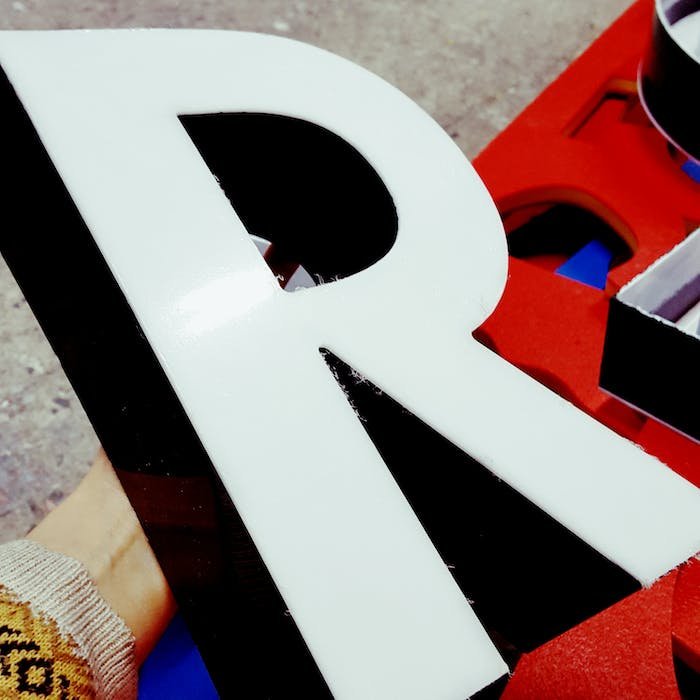
The 4R method of note-taking is a strategy that focuses on four key actions: Record, Reduce, Recite, and Review. This method is designed to enhance learning and retention of information. Here’s a breakdown of each step:
Record
During the initial phase, actively record information. This could involve taking notes during a lecture, writing down key points while reading a text, or capturing important details during a presentation. Record the main ideas, concepts, and relevant details.
Reduce
After capturing the information, reduce or condense your notes. The reduction process involves summarizing the content by focusing on the essential points. Eliminate redundancy and unnecessary details. This step helps distill the information to its core elements.
Recite
You can engage in active recall by reciting or explaining the information in your own words. This step tests your understanding and memory of the material. You can do this by reciting the key points aloud, teaching the concepts to someone else, or writing a summary without looking at your notes.
Review
You must regularly review your notes to reinforce your learning. Periodic reviews help with long-term retention. Schedule regular review sessions, especially focusing on the condensed and summarized versions of your notes. This step ensures that the information stays fresh in your memory over time.
The 4R method emphasizes active engagement with the material through recording, condensing, recalling, and reviewing.
By incorporating these steps into your note-taking process, you enhance your understanding and retention of the information. This method is especially useful for students and learners who want to optimize their study habits and improve their ability to recall information over the long term.
Which is a characteristic of effective notes?
Effective notes are well-organized, with a clear and logical structure. Information is arranged in a way that reflects the relationships between different ideas or concepts. Whether you’re using headings, subheadings, bullet points, or other formatting tools, the organization makes it easy to follow the flow of information.
Organized notes help you quickly locate specific details, understand the hierarchy of concepts, and review information efficiently. The structure also aids in creating a visual roadmap of the content, making it easier to grasp the overall context of the material.
How do you write short notes?
Focus on Key Points
Identify the main ideas, key concepts, or critical details of the information you are summarizing. Eliminate unnecessary details to keep your notes concise.
Write in Your Own Words
Summarize information using your own words. This not only aids in understanding but also ensures that you are capturing the essence of the content without unnecessary details.
Prioritize Information
Arrange information in order of importance. Start with the most critical points and follow with supporting details. This ensures that if time is limited, you’ve captured the essentials.
Use Headings and Subheadings
If your short notes cover different topics or sections, use headings and subheadings to create a clear organizational structure. This enhances the readability of your notes.
Create Visuals
Incorporate visual elements such as charts, graphs, or diagrams to represent information more succinctly. Visuals can often convey complex ideas more efficiently than text.
Avoid Redundancy
Eliminate redundant information. If a point has already been stated, there’s no need to repeat it unless emphasizing its importance.
Limit Details
Stick to the essential details. While comprehensive notes have their place, short notes should focus on what’s necessary for a quick review or reference.
Use Acronyms or Mnemonics
Create acronyms or mnemonics to help remember key points. This can be especially useful when summarizing information that follows a sequence or list.
Stay Objective
Maintain objectivity in your short notes. Avoid unnecessary opinions or extensive commentary. Stick to presenting the facts and essential information.
Periodically review and revise your short notes. As you gain a deeper understanding of the material, you may find opportunities to further condense or clarify your summaries.
Capture Action Items
If your notes relate to tasks or actions, be sure to include actionable items. This helps in turning your notes into practical steps.
Consider Digital Tools
If you’re taking digital notes, consider using tools that allow you to easily format and organize information. Digital note-taking apps often have features that support concise and effective summarization.
Remember that the goal of short notes is to create a quick, accessible reference. By focusing on the most important elements and maintaining clarity, your short notes become valuable tools for rapid review and understanding.
How do you start a note?
Starting a note effectively is crucial for setting the tone and providing context for the information you’re about to capture. Whether you’re jotting down thoughts, taking meeting minutes, or summarizing a lecture, here are some tips on how to start a note:
Date and Time
Begin by noting the date and time, especially if your notes are part of a time-sensitive context. This helps provide a chronological reference.
Title or Heading
If your notes cover a specific topic, provide a clear title or heading at the top. This immediately signals the subject of the note and aids in organization.
Objective or Purpose
Briefly state the objective or purpose of your note. This can be a sentence or two explaining why you are taking these notes and what you aim to achieve.
Context or Background
Provide a brief context or background information related to the subject of your notes. This helps readers (including yourself, if you come back to the notes later) understand the setting or circumstances.
Key Points Preview
If possible, provide a preview of the key points you anticipate covering in your notes. This gives readers an overview of what to expect.
Meeting Agenda
If your notes are for a meeting, include an agenda at the beginning. This outlines the topics to be covered and helps participants follow the discussion.
Introduction Sentence
Start with a concise introduction sentence that sets the tone for your notes. This sentence can summarize the main theme or purpose, acting as a guide for what follows.
Mind Map or Diagram
Consider starting with a mind map or diagram if your note-taking involves visual representation. This is particularly useful for brainstorming sessions or capturing interconnected ideas.
Quotations or Notable Points
If there’s a particularly relevant quotation or notable point associated with the subject, consider starting with it. This can add emphasis and immediately draw attention to key ideas.
Action Items
If your notes include action items or tasks, start with a list of these items. This helps in clearly outlining the next steps that need to be taken.
Bold or Highlight
Use bold text or highlighting for important headings or key points. This makes it easy to scan the note quickly and locate crucial information.
Personalized Greeting (for Personal Notes)
If your notes are more informal or personal, consider starting with a brief personalized greeting or salutation. This adds a human touch to the notes.
Consistent Format
Establish a consistent format for starting your notes. Whether it’s a specific header style, a set of bullet points, or a particular introductory phrase, consistency aids in organization.
Remember that the way you start your notes depends on the context and your personal preferences. Tailor your approach based on the type of information you’re capturing and the purpose of your notes.
Why do I struggle to take notes?
Follow the article to understand the different methods of note-taking. This is a detailed guidance to help you take notes and use it effectively in your studies. You can also take help from your teacher to make notes strategically.
Is note-taking useful?
Note-taking, especially during lectures, is very important and useful. During classroom sessions, teachers also share their experiences related to the curriculum. You can take some guidance from there and note them down to further utilize them. You can recall these notes later on while self-studying.
What is the disadvantage of note-taking?
If the teacher is too quick in giving lectures, then it will be difficult for you to catch up with her and note down the points. Secondly, you will need some time to organize them before you can use them. Other than these two disadvantages, note-taking has many advantages.
Should I take notes every day?
If you are having daily lectures, or you are taking online classes, then it could be really useful for you.
What is the charting method?
Charting is a method of taking notes that organizes and condenses data using charts. This method divides a document into multiple columns and rows, which are then filled with information summaries.

